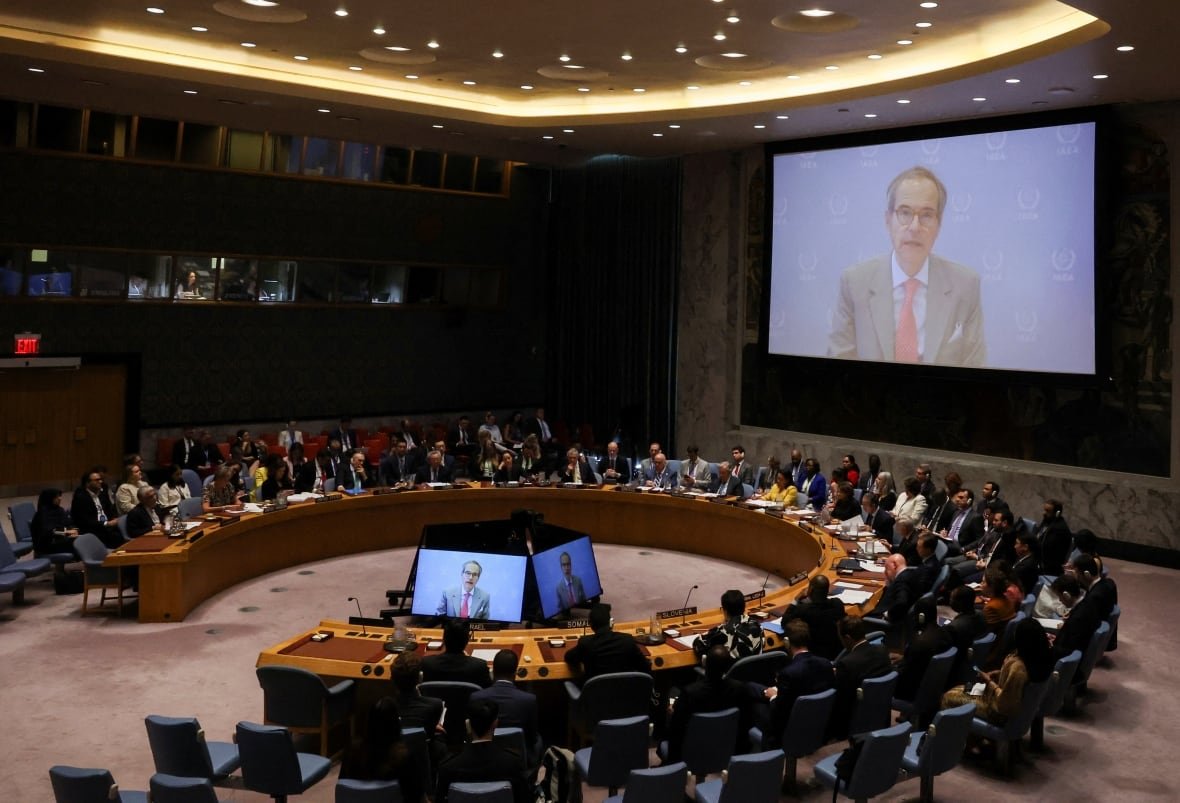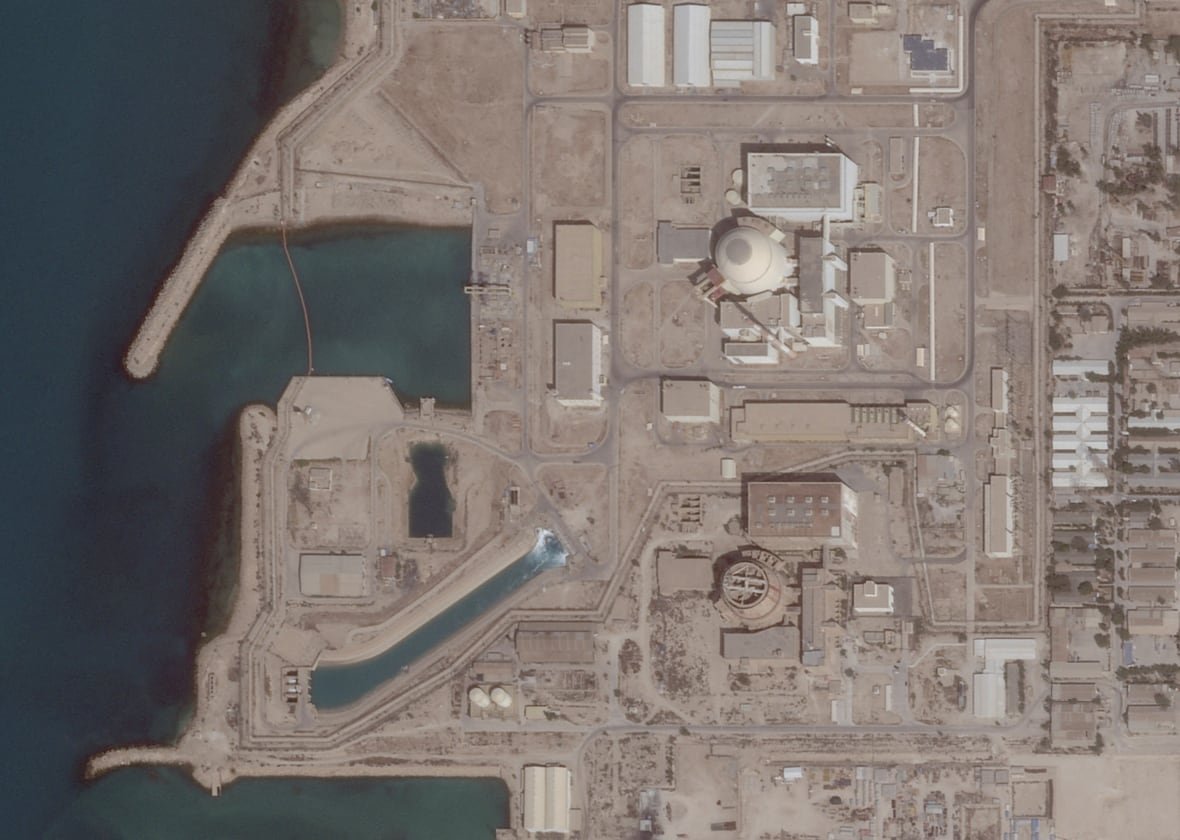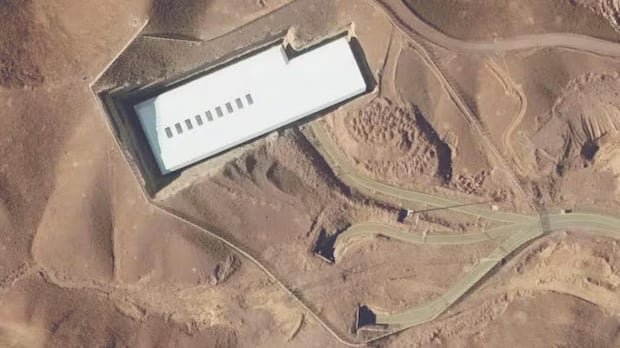Tensions are sky-high as the war between Israel and Iran enters its second week.
Israel is intensifying its strikes on Iran’s nuclear program. The United States has warned it might join the effort. And even as experts say the radiation risks are low, the International Atomic Energy Agency (IAEA) has called the situation “deeply concerning” and said it “could result in radioactive releases with great consequences.”
Geopolitically, it’s already a crisis situation, retired U.S. air force general Philip Breedlove, a former NATO Supreme Allied Commander Europe, told CBC News Network on Friday.
“This needs to be managed to an end whereby Iran is not going to have a nuclear weapon,” he said.
For a diplomatic outcome, Iran would need to agree to “persistent, pervasive, intrusive inspections” to ensure it’s not building a nuclear weapon — and this is extremely unlikely to happen, Breedlove said. “So this is going to proceed to some sort of conclusion — by force, probably.”
But in terms of radiation risks, how concerned should the world actually be about potential nuclear fallout? It depends on the target, experts say. And while so far there’s been no evidence radioactive material has been released, the IAEA has warned that could change.
Speaking to the United Nations Security Council on Friday, the head of the IAEA once again called for “maximum restraint” in the conflict to avoid further escalation.
“Armed attack for nuclear facilities should never take place and could result in radioactive releases with great consequences within and beyond boundaries of the state which has been attacked,” said Rafael Grossi, its director general.
The attacks so far have caused a “sharp degradation to nuclear safety and security in Iran,” he said. “Though they have not so far led to a radiological release affecting the public, there is a danger this could occur.”

No evidence radioactive material released
Israel has announced attacks on nuclear sites in the cities of Natanz, Isfahan, Arak and Tehran, Iran’s capital.
The IAEA has reported damage to the uranium enrichment plant at Natanz, to the nuclear complex at Isfahan, including the Uranium Conversion Facility, and to centrifuge production facilities in Karaj and Tehran.
Israel has also attacked Arak, known as Khondab. The IAEA said Israeli military strikes hit the Khondab Heavy Water Research Reactor, which was under construction and had not begun operating, and damaged the nearby plant that makes heavy water. The agency said that it was not operational and contained no nuclear material, so there were no radiological effects.

While the recent strikes at nuclear facilities in Iran have understandably raised concerns, there’s no evidence of any release of radioactive material into the environment, Peter Bryant, an associate professor in nuclear safety and radiation protection at the University of Surrey in England, said in an online statement on Wednesday.
“It is important to understand that radiation is easy to detect, even at very low levels, using well-established and highly sensitive monitoring equipment. No unusual levels have been reported,” Bryant said.
“Radiation is a normal part of everyday life, found naturally in rocks, soil, the air, and even some foods. While the word ‘radioactive’ can sound alarming, it does not automatically mean danger.”
So far, Israel’s strikes appear to have only hit uranium enrichment plants, which don’t pose much of a radioactive hazard, said Richard Wakeford, a professor of epidemiology at the University of Manchester’s Centre for Occupational and Environmental Health.
If reactors (or reprocessing plants) are hit, that could be more of a radiological problem if it causes significant damage, he added in a statement on the Science Media Centre.
“Then we could see releases of a range of radionuclides, although presumably on a much smaller scale than from previous reactor accidents.”
A week after Israel’s initial strikes on nuclear and military targets across Iran, many are asking: What comes next? As deadly attacks and counterattacks between the two countries continue with no end yet in sight, Andrew Chang explores what Israel’s endgame might be in its war with Iran and why its ambitions could go well beyond preventing Iran from developing a nuclear bomb.
(Images provided by Getty Images, The Canadian Press and Reuters)
What about nuclear reactors?
The major concern would be a strike on Iran’s nuclear reactor at Bushehr. On Friday, the IAEA’s Grossi warned the UN that an attack on Bushehr would have severe consequences since it’s an operating nuclear power plant hosting thousands of kilograms of nuclear material.
“I want to make it absolutely and completely clear: In the case of an attack on the Bushehr nuclear power plant, a direct hit would result in a very high release of radioactivity to the environment,” Grossi said.
“Similarly, a hit that disabled the only two lines supplying electrical power to the plant could cause its reactor’s core to melt.”

James Acton, co-director of the Nuclear Policy Program at the Carnegie Endowment for International Peace, told Reuters that an attack on Bushehr “could cause an absolute radiological catastrophe.”
Experts also told Reuters that it would be “foolhardy” for Israel to attack Bushehr given the radiological consequences.
And Fabian Hinz, a research fellow at the International Institute of Strategic Studies, told The Associated Press that “it seems very unlikely” that Israel would strike Bushehr since it isn’t considered to be part of the Iranian nuclear program geared toward developing weapons.
What about U.S. involvement at Fordow?
Fordow is Iran’s second nuclear enrichment facility after Natanz, its main facility, and is buried under a mountain. It’s widely considered to be out of reach by all but the Americans’ “bunker-buster” bombs.
On Friday, Grossi said the IAEA was not aware of any damage at the Fordow plant yet. But if the U.S. does decide to support Israel more directly in its attack on Iran, this is the likely target.
It would have to be dropped from an American aircraft since Israel doesn’t have a plane capable of carrying a bomb that big and delivering it with accuracy, William Alberque, the former director of arms control at NATO, told CBC News Network.
Fordow was purposely built deep into a mountain to protect it from potential armed attack, he said.
“We know that it’s there. We’ve had inspectors in there. It has about a 10th of all of Iran’s enrichment capability,” Alberque said.
Still, experts have said any potential radiation impact from a strike on Fordow is likely to be minimal and unlikely to pose a risk to the wider population. There would be some chemical hazards on-site, and some radiation, but at levels that would be manageable with respiratory devices and other protective gear.
That’s because “the enrichment facility or reactor would be buried in tons of earth and concrete,” Simon Bennett, director of the civil safety and security unit at the University of Leicester in England, told the Science Media Centre.
“Further, those who run the site would have been trained in radiation monitoring and mitigation techniques.”
Get the latest on CBCNews.ca, the CBC News App, and CBC News Network for breaking news and analysis.


